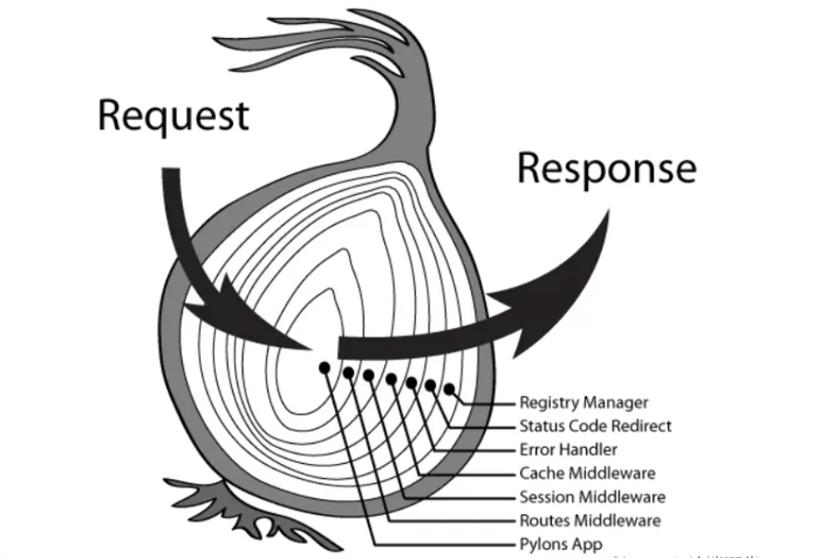- 联系我们
- duidaima.com 版权声明
- 闽ICP备2020021581号
-
 闽公网安备 35020302035485号
闽公网安备 35020302035485号
 闽公网安备 35020302035485号
闽公网安备 35020302035485号
const requestAry = [() => api.request1(), () => api.request2(), () => api.request3()];
for (const requestItem of requestAry) {
await requestItem();
}
如果使用promise,可以使用then函数串联多个promise,实现串行执行。const requestAry = [() => api.request1(), () => api.request2(), () => api.request3()];
const finallyPromise = requestAry.reduce(
(currentPromise, nextRequest) => currentPromise.then(() => nextRequest()),
Promise.resolve() // Create an initial promise for linking promises in the array
);
2. 在新的 Promise 范围之外更改状态<!-- 堆代码 duidaima.com -->
<!-- App.vue -->
<template>
<!-- The following is the modal box component -->
<div class="modal" v-show="visible">
<div>
User name: <input v-model="info.name" />
</div>
<!-- Other information -->
<button @click="handleCancel">Cancel</button>
<button @click="handleConfirm">Submit</button>
</div>
<!-- Page components -->
</template>
<script setup>
import { provide } from 'vue';
const visible = ref(false);
const info = reactive({
name: ''
});
let resolveFn, rejectFn;
// Pass the information collection function to the following
provide('getInfoByModal', () => {
visible.value = true;
return new Promise((resolve, reject) => {
// Assign the two functions to the outside and break through the promise scope
resolveFn = resolve;
rejectFn = reject;
});
})
const handleConfirm = () => {
resolveFn && resolveFn(info);
};
const handleCancel = () => {
rejectFn && rejectFn(new Error('User has canceled'));
};
</script>
接下来,getInfoByModal就可以通过直接调用模态框来轻松获取用户填写的数据。<template>
<button @click="handleClick">Fill in the information</button>
</template>
<script setup>
import { inject } from 'vue';
const getInfoByModal = inject('getInfoByModal');
const handleClick = async () => {
// After the call, the modal box will be displayed. After the user clicks to confirm, the promise will be changed to the fullfilled state to obtain the user information.
const info = await getInfoByModal();
await api.submitInfo(info);
}
</script>
这也是很多UI组件库中封装常用组件的一种方式。const fn1 = async () => 1; const fn2 = () => Promise.resolve(1); fn1(); // Also returns a promise object with a value of 1在大多数情况下,await 会跟随 Promise 对象并等待它完全填充。因此,下面的 fn1 函数 wait 也是等价的:
await fn1(); const promiseInst = fn1(); await promiseInst;然而,await也有一个鲜为人知的秘密。当它后面跟的值不是promise对象时,它会用promise对象包装该值,所以await后面的代码必须异步执行。例子:
Promise.resolve().then(() => {
console.log(1);
});
await 2;
console.log(2);
//Print order bits: 1 2
相当于Promise.resolve().then(() => {
console.log(1);
});
Promise.resolve().then(() => {
console.log(2);
});
4. 承诺实施请求共享request('GET', '/test-api').then(response1 => {
// ...
});
request('GET', '/test-api').then(response2 => {
// ...
});
上述两个请求实际上只发送一次,同时收到相同的响应值。2.提交按钮未禁用且用户连续多次点击提交按钮;
3.预加载数据的情况下,预加载完成之前进入预加载页面;
const pendingPromises = {};
function request(type, url, data) {
// Use the request information as the only request key to cache the promise object being requested
//Requests with the same key will reuse promise
const requestKey = JSON.stringify([type, url, data]);
if (pendingPromises[requestKey]) {
return pendingPromises[requestKey];
}
const fetchPromise = fetch(url, {
method: type,
data: JSON.stringify(data)
})
.then(response => response.json())
.finally(() => {
delete pendingPromises[requestKey];
});
return pendingPromises[requestKey] = fetchPromise;
}
上述两个请求实际上只发送一次,同时收到相同的响应值。const promise = new Promise((resolve, reject) => {
resolve();
reject();
});
正确答案是已满状态。我们只需要记住,一旦待处理的promise从一种状态转移到另一种状态,就无法更改。因此,例子中是先转为fulfilled状态,然后reject()就不会再转为rejected状态。// then function
Promise.resolve().then(() => 1); // The return value is new Promise(resolve => resolve(1))
Promise.resolve().then(() => Promise.resolve(2)); // Return new Promise(resolve => resolve(Promise.resolve(2)))
Promise.resolve().then(() => {
throw new Error('abc')
}); // Return new Promise(resolve => resolve(Promise.reject(new Error('abc'))))
Promise.reject().then(() => 1, () => 2); // The return value is new Promise(resolve => resolve(2))
//catch function
Promise.reject().catch(() => 3); // The return value is new Promise(resolve => resolve(3))
Promise.resolve().catch(() => 4); // The return value is new Promise(resolve => resolve(promise object that calls catch))
//When the finally function returns a non-promise value, return the promise object before the finally function.
Promise.resolve().finally(() => {}); // Return Promise.resolve()
Promise.reject().finally(() => {}); // Return Promise.reject()
// When the return value of the finally function is promise, wait for the returned promise to be parsed before returning the promise object before the finally function.
Promise.resolve(5).finally(() => new Promise(res => {
setTimeout(res, 1000);
})); // Return the Promise in pending status, which will be resolved to 5 after 1 second.
Promise.reject(6).finally(() => new Promise(res => {
setTimeout(res, 1000);
})); // Return the Promise in the pending state, and throw the number 6 after 1 second
7、then函数的第二次回调和catch回调有什么区别?Promise.resolve().then(
() => {
throw new Error('Error from success callback');
},
() => {
// will not be executed
}
).catch(reason => {
console.log(reason.message); // Will print out "error from success callback"
});
原理就如上一点所说的。catch 函数是在 then 函数返回的处于拒绝状态的 Promise 上调用的,因此它的错误自然可以被捕获。
const app = new Koa();
app.use(async (ctx, next) => {
console.log('a-start');
await next();
console.log('a-end');
});
app.use(async (ctx, next) => {
console.log('b-start');
await next();
console.log('b-end');
});
app.listen(3000);
上面的输出是a-start -> b-start -> b-end -> a-end,这样神奇的输出序列是如何实现的呢?有人没天赋,简单的用20行左右的代码就实现了。如有雷同,纯属巧合。function action(koaInstance, ctx) {
// ...
}
class Koa {
middlewares = [];
use(mid) {
this.middlewares.push(mid);
}
listen(port) {
// Pseudocode simulates receiving request
http.on('request', ctx => {
action(this, ctx);
});
}
}
收到请求后,从第一个中间件开始串行执行next之前的前置逻辑。//Start to start middleware call
function action(koaInstance, ctx) {
let nextMiddlewareIndex = 1; // Identifies the next middleware index to be executed
//Define next function
function next() {
// Before peeling the onion, calling next will call the next middleware function
const nextMiddleware = middlewares[nextMiddlewareIndex];
if (nextMiddleware) {
nextMiddlewareIndex++;
nextMiddleware(ctx, next);
}
}
//Start execution from the first middleware function and pass in the ctx and next functions
middlewares[0](ctx, next);
}
处理next之后的post逻辑function action(koaInstance, ctx) {
let nextMiddlewareIndex = 1;
function next() {
const nextMiddleware = middlewares[nextMiddlewareIndex];
if (nextMiddleware) {
nextMiddlewareIndex++;
// A return is also added here to allow the execution of the middleware function to be executed in series from back to front using promises (it is recommended to understand this return repeatedly)
return Promise.resolve(nextMiddleware(ctx, next));
} else {
// When the pre-logic of the last middleware is executed, return the fullyfilled promise and start executing the post-logic after next.
return Promise.resolve();
}
}
middlewares[0](ctx, next);
}
至此,一个简单的洋葱模型就已经实现了。